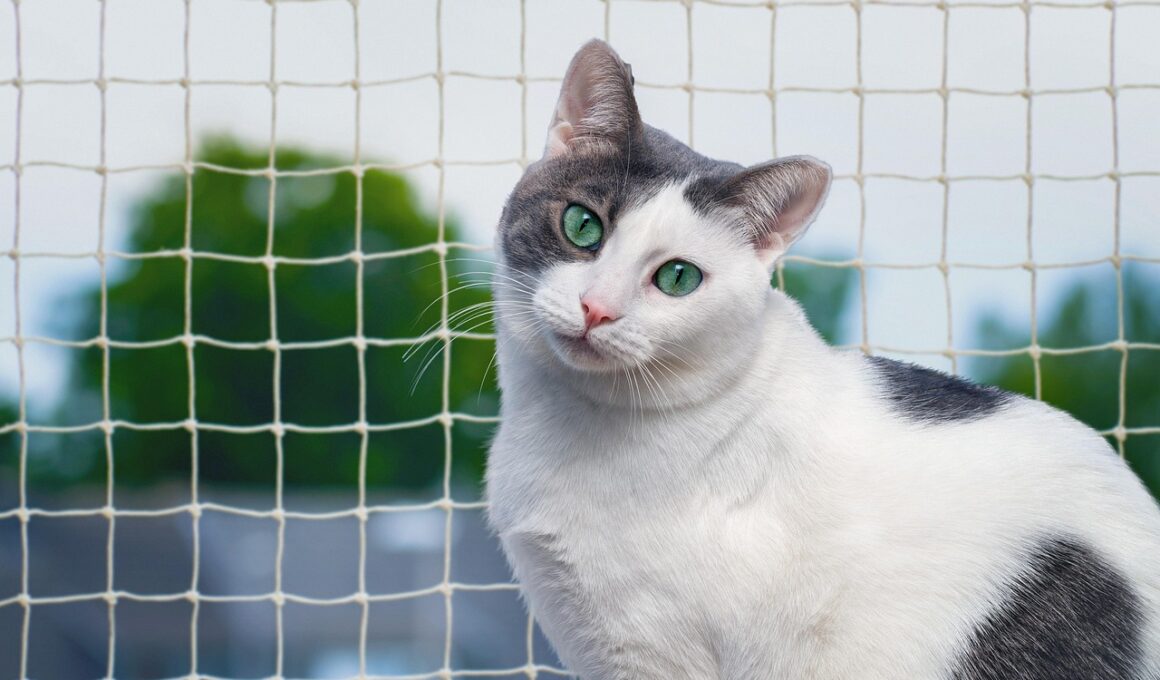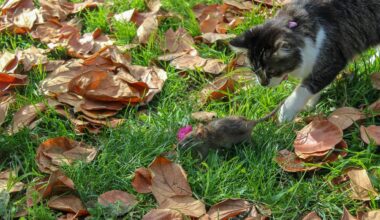How to Cat-Proof Your Home Against Strangulation Hazards
Cat safety is paramount, particularly when it comes to preventing strangulation hazards in your home. Cats are naturally curious creatures and often like to explore. This exploration can lead them to dangerous situations that may not be readily apparent. Common household items, such as cords, strings, and even certain types of furniture, can pose strangulation risks. Therefore, cat-proofing your home involves identifying and mitigating these hazards. Start by investigating your space, noting potential dangers that your feline friend might encounter. Important areas to check include behind furniture and along the baseboards where wiring often lies. Keep in mind that prevention is better than cure, and knowing more about potential hazards can save your cat’s life. Make sure to remove or securely fasten any cords. Use cord management solutions, such as clips and holders, to keep them out of reach. You can also consult your veterinarian for further tips on ensuring your home environment is safe. Creating a safe space lets your cat roam, play, and enjoy their surroundings without the fear of potential risks.
One area of focus is your choice of furniture and decor. Furniture with dangling ribbons or fabrics that can ensnare your cat’s claws should be avoided whenever possible. In addition, curtains with long ties are a risk as they can easily entangle your cat. Invest in window treatments designed for pet safety. Consider blinds without visible cords, which can be a much safer option. For additional security, use strong adhesive hooks to mount curtain tiebacks, eliminating the risk of your cat getting tangled. Anything that has the potential to wrap around or ensnare your cat must be removed or modified. Look out for items such as loose throw blankets or yarn in the living space, which can also create potential hazards. Ensuring that these are stored away in boxes or bins is essential. Educate yourself on safe pet alternatives for home decor. Doing this will not only enhance your home aesthetics but will also provide a safer space for your curious cat to thrive.
Managing Cords and Electrical Wires
Managing cords and electrical wires is crucial in creating a cat-proof home. Electrical cords can pose risks, as they may be chewed on or tangled, leading to injuries or even electrocution. To mitigate these hazards, consider using cord protectors and wraps designed specifically for pets. These products shield wiring from being chewed or tangled. Try using cable management sleeves that can hold many wires snugly in one place. When installing devices near the ground, get creative with cord leadership; utilize clips or adhesive hooks to route cords along furniture legs. Moreover, it’s essential to conceal power strips as they can attract your inquisitive cat. Use cord concealment boxes to keep them out of sight and inaccessible to your feline companions. Ensure that any potential loose cables are secured against the wall or out of reach. Electrical outlets should also be protected with safety caps to prevent accidental electrocution. Overall, safeguarding your home against cords leads to a more relaxed environment for both you and your cat.
While preventing strangulation hazards is vital, it’s equally important to give your cat safe alternatives. Provide your feline with designated play areas filled with toys and climbing structures. Cat trees, shelves, and tunnels are excellent investments that offer numerous play opportunities without risk. Additionally, ensure that toys are appropriate and safe for your cat’s playtime. Avoid toys with strings, pins, or long pieces that can easily become hazards. Instead, opt for soft, rounded toys or those designed for interactive play. You may also engage your cat with plenty of mental stimulation tools such as puzzle feeders. These can keep your cat entertained and away from potential hazards. Moreover, incorporate safe spaces where your cat can retreat. Love for your pet means considering their mental, emotional, and physical needs. This corner can feature cozy beds, scratching posts, and personal belongings. By providing a safe and engaging environment, you help your pet thrive while minimizing the risk of strangulation. Remember, a well-adjusted kitty is a happy kitty!
Understanding Safe Plants for Your Cats
As you make efforts to cat-proof your home, don’t overlook the importance of plants. Many indoor plants can be harmful to cats. Plants such as lilies, philodendrons, and pothos can cause severe health complications if ingested. It is best to familiarize yourself with safe plant species that won’t harm your feline. Opt for non-toxic plants like spider plants or cat grass, which are safe for kittens and curious cats alike. Additionally, you can choose herbs like basil or parsley — they’re not just beautiful but also pet-friendly. Your outdoor garden must also be pet-proofed, as outdoor plants can attract curious cats. Always check and confirm that your garden is free from toxic varieties. Banning harmful plants will protect your pets and ensure a safer environment for exploration. Create a dedicated pet area where your safe plants can thrive — this way, your curious companion has space to engage without risk. People often overlook this aspect when ensuring their living spaces are safe for pets. Thus, maintaining cat-friendly flora is a necessary consideration.
Establishing boundaries can be another effective strategy for preventing strangulation hazards in your home. Use pet gates or barriers to limit access to certain rooms or areas where hazards may exist. This method can ensure that your cat stays safe from items that pose risks. You can also designate specific cat-free zones, particularly in high-traffic areas such as utility rooms or laundry rooms. These places often contain cords, heavy machinery, or dangerous chemicals. Educate family members about maintaining these areas free from cat access as well. Additionally, when installing any new furniture or appliances, think about how these may inadvertently create new hazards. Be mindful of the placement of these items, ensuring cords do not hang down. Create a routine that includes inspecting frequently used items and areas in your house for hazards. Regular monitoring allows you to catch any issues before they become problems. Small changes can make a big difference in protecting your cherished cats. Always prioritize safety to cultivate a secure environment for your feline friends.
Conclusion and Final Tips
To wrap up, ensuring that your home is safe from strangulation hazards for your cat is a comprehensive task that requires planning and observation. By thoroughly evaluating your surroundings, you can identify dangerous items and replace them with alternatives that create a safer space for your pet. Implement strategies to manage cords and secure loose items, while replacing potentially dangerous toys or textiles. It is important to educate yourself about which household plants are harmful and take appropriate steps to limit access to them. Remember that providing safe toys and play spaces will keep your cat engaged without posing risks. Training family members on how to contribute to a safe environment is equally crucial. Always examine potential hazards when new items are brought into your home. Don’t hesitate to make necessary modifications for the safety of your beloved pet. Regular updates to your home can keep it a secure sanctuary. In the case of accidents, it’s important to keep a vet’s contact information handy. Ultimately, with some effort, you can create a wonderfully safe and comfortable habitat for your cat.
Remember that creating a safe space for your beloved feline is an ongoing responsibility that requires vigilance and constant assessment. Regularly check various areas where they play or lounge for any potential risks. Engaging with your cat is also a fantastic way to foster a connection and understand their behavior. This can allow you to anticipate their actions and modify your home in response to their habits. Additionally, consider investing in safety tools that might minimize risks further. These might include safety clips or automated warning systems that alert you when your cat approaches a protected area. Implementing specialized pet care service consultations can also be valuable if they provide expertise in creating a truly pet-centric space at all times. Show love and care through diligence in keeping your cat safe. Lastly, make time for play activities to enrich your cat’s life, allowing them to explore their natural instincts safely. Keeping your feline companion healthy while ensuring they have mental stimulation can create a loving atmosphere. A well-cared-for cat is not only happier but leads to a strengthened bond between you and your pet. Always strive for that ideal balance of care and protection.


